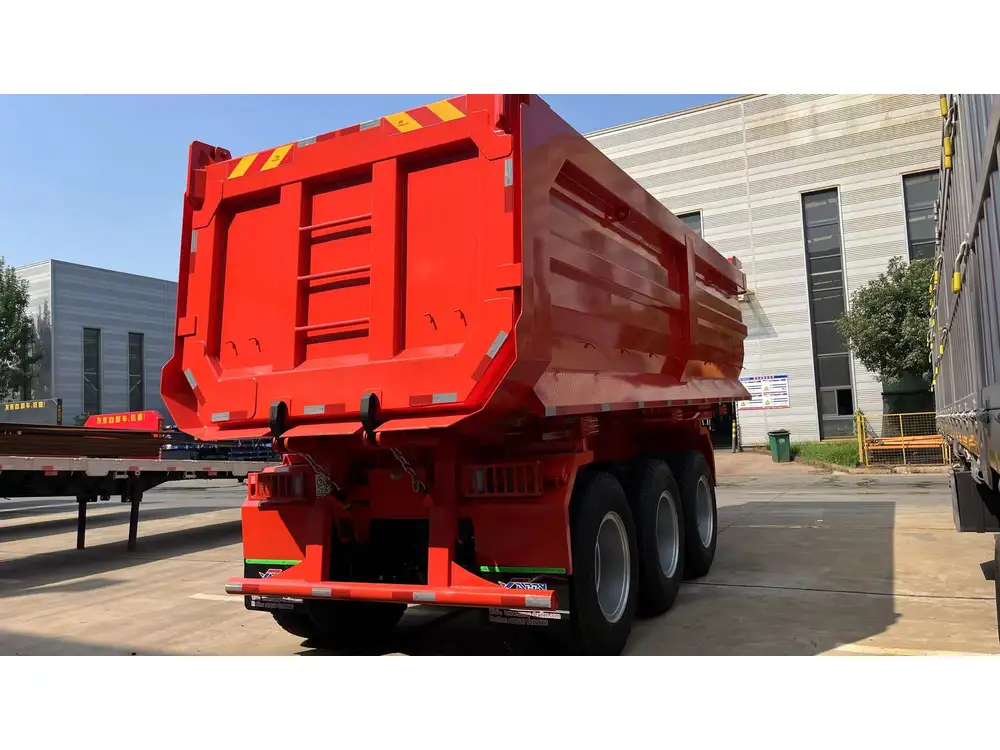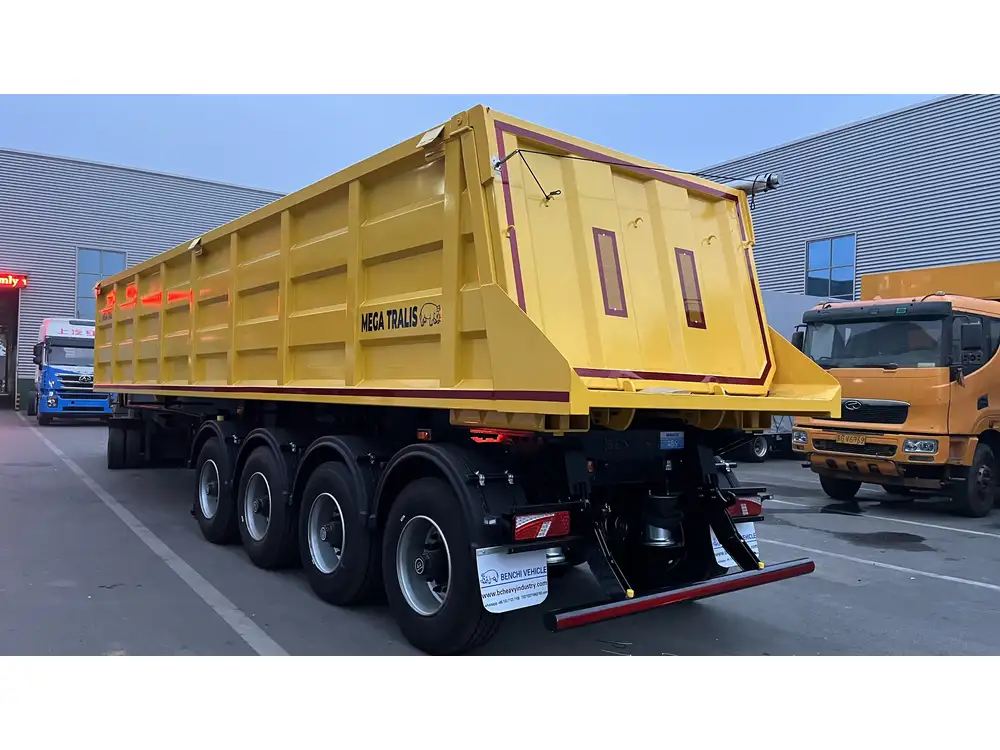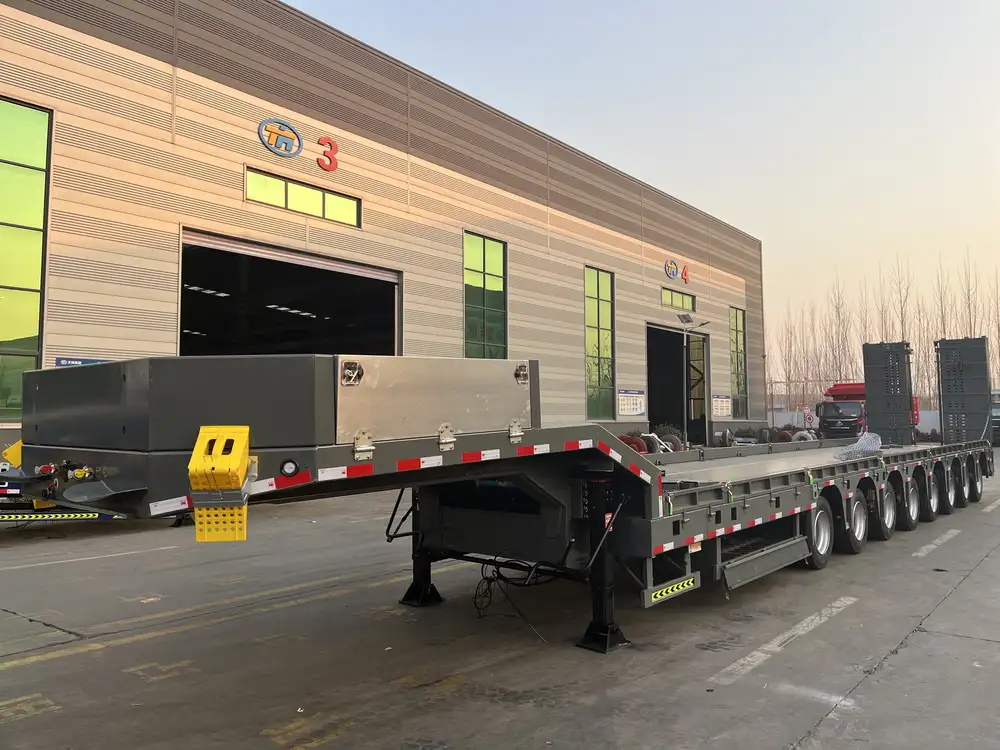In the realm of transport logistics, the semi-trailer deck height is an essential consideration that affects the performance, safety, and efficiency of freight transport. The deck height determines loading configurations, vehicle compatibility, and compliance with road regulations. As manufacturers of semi-trailers, we understand the critical nature of this parameter and strive to provide insightful, detailed, and structured information surrounding deck heights.
What is the Typical Deck Height of Semi-Trailers?
Standard Deck Heights
Understanding the Variability: The height of semi-trailers can vary significantly based on the type of trailer, load specifications, and manufacturer designs. Commonly, the standard deck height ranges from 48 to 54 inches (121.9 cm to 137.2 cm) from the ground. However, variations exist based on specific types of trailers, such as flatbeds, reefer trailers, and lowboys.
| Trailer Type | Standard Deck Height (inches) | Notes |
|---|---|---|
| Flatbed Trailer | 48 – 54 | Versatile for various cargo types |
| Refrigerated Trailer | 48 – 53 | Designed for temperature-sensitive goods |
| Lowboy Trailer | 18 – 24 | Maximum height for freight transport |
| Step Deck Trailer | 40 – 48 | Facilitates taller loads without permits |

Factors Affecting Deck Height
Deck height isn’t a one-dimensional specification. It depends on various factors that demand attention from both manufacturers and operators. Key elements influencing semi-trailer deck heights include:
Trailer Design: The structural design of different trailer types significantly affects their height. For instance, lowboy models feature lower decks that provide better stability for heavy machinery transport.
Load Requirements: The nature and height of the cargo dictate how high the deck needs to be. Operators transporting bulky items must balance deck height with stability and safety considerations.
Tire Size and Suspension System: Variations in tire height and vehicle suspension systems can result in different deck heights. Taller tires effectively raise the deck height, influencing loading and unloading operations.
Importance of Deck Height in Transportation
Understanding the significance of semi-trailer deck height helps trucking operators optimize their operations, improve safety measures, and achieve regulatory compliance. Here are key reasons why deck height is essential in transportation logistics:
1. Load Configuration and Stability
Knowing the deck height is fundamental for ensuring proper load distribution. A higher deck height may lead to unstable configurations and increase the risk of tipping during transit. That’s why manufacturers are meticulous in designing trailers that suit varied load profiles while ensuring safety.

2. Regulatory Compliance
Compliance with Federal and State regulations surrounding height limits is crucial to avoid penalties. Different regions have varying stipulations for overall vehicle height, which include the payload itself. A trailer’s deck height plays a critical role in maintaining these compliance standards, particularly on highways and interstates.
3. Efficient Loading and Unloading
A semi-trailer with the correct deck height aids in streamlining loading and unloading processes. Compatibility between dock heights and semi-trailer deck heights enhances operational efficiency and minimizes cargo damage during transfers.
4. Design Influence on Vehicle Compatibility
Each deck height corresponds differently with the cab’s fifth wheel height on the tractor unit. A lack of harmony can lead to operational issues such as driveability concerns and increased wear on hauling components.

Specific Applications and Custom Deck Height Considerations
In certain circumstances, manufacturers might create custom deck heights tailored specifically for niche applications. Let’s explore some scenarios where special considerations are applied:
Specialized Freight Transport
Companies must factor in the dimensions of unique cargo (e.g., construction vehicles, oversized industrial equipment) when determining the necessary deck height. Custom trailers might be designed with lower or adjustable decks to accommodate outsized freight effectively while being road-compliant.
Agricultural Equipment
In agricultural logistics, moving large machines like farmers’ combines or harvesters may require specific trailer adjustments to cater to their unique loading needs. Deck heights may need to be lowered or ramp-designed for easier access.

Calculating the Ideal Deck Height for Your Needs
Determining the optimal deck height calls for a methodical approach. Here’s a streamlined process:
Step 1: Assess Your Cargo Height
Establish a baseline of cargo dimensions for your regular loads. Understanding maximum and minimum heights is crucial.
Step 2: Evaluate Loading and Unloading Facilities
Inspect the receiving and shipping facilities. Know the dock heights, ramps, and other relating structures to fit your semi-trailer needs adequately.

Step 3: Compliance Check
Ensure your calculations align with height restrictions based on zoning regulations. This is particularly vital when doubling the height of specially configured trailers.
Step 4: Decide on Trailer Type
Choose a trailer based on its potential to meet your specifications. Having a range of types allows for flexibility in cargo hauling without hindrance due to improper height adjustments.
Innovations in Deck Height Design
The transport industry is ever-evolving, necessitating adaptations in trailer design and functionality. Innovations have surfaced related to deck height, enhancing versatility and user-friendliness:

Air Ride Suspension Systems
Modern trailers equipped with air ride suspension allow for adjustable deck heights. By manipulating the air pressure within the suspension, operators can raise or lower the deck height to suit loading requirements effectively. This is particularly beneficial when transporting uneven or oversized loads.
Modular Trailer Designs
Modular semi-trailers allow operators to adjust the deck height according to their needs. These trailers can be reconfigured for different loads, enhancing flexibility across various transportation scenarios.
Smart Technologies
Emerging technologies such as IoT sensors can provide live feedback on deck height and load stability. These advancements help operators not only to maintain compliance but also to optimize loading procedures, thereby maximizing overall efficiency.

Conclusion: The Critical Role of Deck Height in Semi-Trailer Performance
The semi-trailer deck height is more than just a measurement—it’s a pivotal factor influencing safety, compliance, performance, and overall efficiency in freight transport. By understanding the significance of various deck heights, operators can strategically leverage this knowledge to enhance operations, reduce costs, and ensure regulatory compliance.
In summary, the deck height of semi-trailers affects numerous facets of transportation logistics, from the types of cargo that can be hauled to the compliance with legal height restrictions. Continuous innovations in trailer design point toward a future of increased adaptability and operational efficiency, catering to the evolving needs of the transport industry.
The journey to choosing the perfect semi-trailer requires careful analysis and understanding of various factors surrounding deck height, ultimately bearing on the performance and safety of your hauls. As your trusted manufacturer of semi-trailers, we remain committed to providing the insights and innovations necessary for your transportation success.



